Christmas in Italy is a magical time full of centuries-old traditions, elaborate decorations, and festive celebrations. As a predominantly Catholic country, the Christmas season revolves around the religious aspects of the holiday, with Nativity scenes and midnight mass playing a central role. But there are also many secular Italian Christmas customs that make the holidays unique. In this content we will discover se Christmas in Italy: centuries of sacred and sweet traditions.
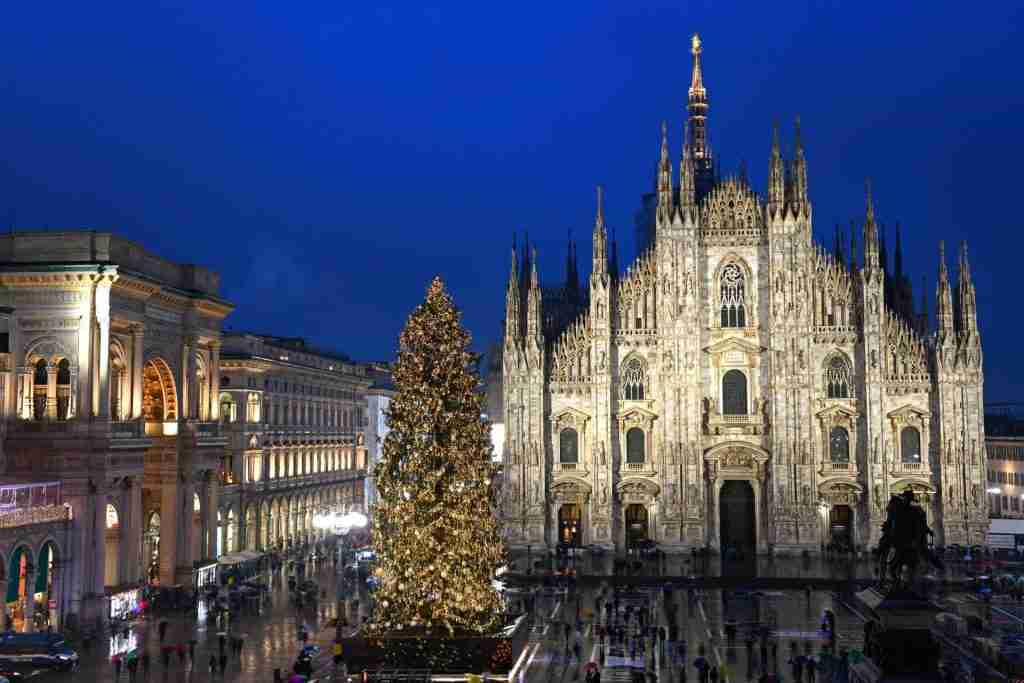
History of Christmas in Italy
The start of the Christmas season in Italy is marked on December 8th with the Feast of the Immaculate Conception. Homes and churches are decorated with traditional wreaths, nativity scenes, and Christmas trees. The Christmas tree itself did not gain widespread popularity in Italy until the 20th century, as the traditional Italian Christmas decoration was the presepe – an intricate Nativity scene sculpture. In the weeks leading up to Christmas, most Italian cities and towns set up large outdoor markets selling Christmas decorations, sweets, and seasonal items. One of the most pivotal Italian Christmas traditions is the live Nativity scene. Churches and town squares will often have a presepe vivente – a live reenactment with people and animals playing the key roles. The first living nativity scene was created by St. Francis of Assisi in 1223 in the town of Greccio and since then it has become an integral part of Italian Christmas festivities. No Italian Christmas would be complete without delicious holiday treats. Panettone and pandoro, sweet leavened breads studded with raisins and citrus fruits, are served across the country. Other Christmas sweets include torrone (nougat), struffoli (deep fried dough balls drizzled with honey), pizzelle (traditional waffle cookies) and a host of regional specialities. Christmas Eve is when the Feast of the Seven Fishes takes place, with many Italians abstaining from meat and enjoying seafood dishes instead.
Christmas in Italy: Christmas Eve
Christmas Eve, La Vigilia, is the bigger celebration in Italy. Families gather for the huge Christmas Eve feast and afterwards attend the midnight mass. One special tradition is that children wait for Babbo Natale (Father Christmas) to deliver gifts rather than Santa Claus. Babbo Natale brings the gifts after midnight mass when the children are sleeping. Another Italian Christmas tradition is living nativity scenes called Presepe Vivente. In many parts of Italy, locals dress up as Mary, Joseph, angels, shepherds, and animals in living nativity scenes. Some reenactments even include a mock census and artisan workshops for historical accuracy. The tradition dates back to 1223, when Saint Francis of Assisi created the first live nativity scene in Greccio, Italy to help locals better understand the nativity story. Food plays a central role in Italian Christmas celebrations. Panettone and pandoro (sweet leavened breads with raisins and citrus fruit) are enjoyed across Italy. Regional specialties also abound – from struffoli (fried dough balls) in Naples to torrone (nougat) in Cremona. The feast of the seven fishes, served on Christmas Eve, is a tradition where many Italians abstain from meat and eat seafood dishes instead. Cod, squid, sardines and eels are commonly served around Italy during the holidays. While Christmas decorations have become more commercialized and Americanized over the years, the Italian presepe (Nativity scene) remains a steadfast tradition. As the birthplace of the presepe, Italians have elevated it from a simple tradition to an elaborate art form. In Italy you can find a dazzling array of unique presepe craftsmanship, from miniature terracotta figurines to intricate ornaments decorating manger scenes across the country. Some date back hundreds of years and are passed down through generations. An Italian Christmas would not be complete without paying a visit to beautiful presepe displays. Two of the most famous are in Naples and Rome. Naples is renowned for its artisanal presepe shops selling handmade wood and terracotta figurines. Rome’s Piazza Navona hosts a Christmas market with ostentatious displays standing over ten feet tall with flowing fountains, rock cliffs and hundreds of figurines. While Christmas Eve holds greater importance in Italian Christmas tradition, Christmas Day itself is still an occasion for celebrating with family. The large feast is typically held early in the afternoon with traditional dishes like capon (stuffed chicken), baked pasta or lasagne. Families will also head out to church together again on Christmas Day. One fun eccentricity about Italian Christmas celebrations is La Befana, a kindly witch who brings gifts on the eve of January 6th, the Epiphany. According to folklore, La Befana delivers presents on her broomstick to children across Italy. She is depicted as an old woman wearing a dark shawl, covered in soot from climbing down chimneys to deliver gifts. Her origins stem from a legend about the three wise men. The January 6th feast officially ends the Christmas season in Italy and is when La Befana reportedly sweeps into children’s homes to fill their socks with candy and presents. For many Italians, the holiday carries equal if not more importance than December 25th. Children leave out stockings or shoes for La Befana to come fill with sweets and gifts, while some leave her a glass of wine or a plate of regional biscuits. Much like Italy’s Babbo Natale, she plays a similar role to Santa Claus in other cultures. From centuries-old living nativities to starch-based sweet breads; ornament craftsmanship to multi-course seafood feasts, Christmas traditions in Italy are steeped in deep religious meaning while still allowing for creativity. No matter where you travel across the country – from Milan down to Palermo – you’ll find Italian Christmas festivities have a distinctive flavor all their own, just as diverse and memorable as the country’s landscapes and people.
Christmas in Italy: Milan sparkles with centuries-old traditions
The vibrant northern Italian city of Milan has its own unique Christmas charm. As the second largest city in Italy and a global fashion capital, Milan combines traditional Italian customs with modern flair during the festive season. At the heart of Milan’s Christmas celebrations is the Feast of Saint Ambrose on December 7th. Saint Ambrose, a 4th century bishop, is the patron saint and protector of the city. Festivities kick off each year with the lighting ceremony of Milan’s Christmas tree in Piazza Duomo. As the city’s central square, it draws big crowds for the tree lighting spectacle complete with live music and performances. By December 8th, the feast of the Immaculate Conception, homes across the city are decorated and sparkling lights adorn city streets. No Italian Christmas is complete without a panettone. This sweet, yeasty fruit bread speckled with raisins and candied orange peel is a Milan specialty, having originated there in the 15th century. Top bakeries such as Cova serve their fluffy artisanal panettone in distinctive festive boxes. Locals and visitors alike flock to Milan’s pastry shops to sample this Christmas treat. For teens and adults, Christmas Eve is when lively street markets fill with seasonal delicacies to enjoy before evening midnight mass. Ice skating in front of Milan’s Duomo is also a popular Christmastime tradition amongst both tourists and locals. The bustling square transforms into a magical open-air ice rink each year. Skaters of all ages whirl under strings of colored lights with the grand cathedral lit up as a backdrop. Couples kiss under mistletoe to the tune of Christmas carols and holiday pop songs played by live musicians. Before sitting down to their extravagant Christmas feast, Italian families may attend midnight mass then return home for a special toast called brindisi. This custom involves gathering with a glass of wine or sparkling Spumante to make the symbolic toast together. Panettone and pandoro grace the holiday table along with dishes like risottos, roasted lamb, seafood pastas, and creamy polenta. Families relax and dine into the early hours before opening presents. Since La Befana doesn’t swoop through to deliver gifts until Epiphany, Babbo Natale is the one who secrectly brings holiday presents to Milan children on Christmas morning. Babbo Natale even makes appearances at department stores in the lead up to Christmas for children to whisper their gift requests in his ear. To work off all of Babbo Natale’s panettone and cookies, an invigorating New Year’s Day tradition occurs each year along the Navigli canals. Hundreds take a chilly dip into the canal on January 1st wearing colorful costumes. This fun custom is thought to bring good luck for the coming year! As a trendsetting Italian city, Milan seamlessly blends traditional Christmas customs with cosmopolitan style. From the magnificent nativity scene outside the cathedral to locals dancing across ice beneath twinkling lights, Milan is an unforgettable place to spend the holidays. Over two thousand years on, Christmas in Milan still remains focused on faith, family feasts, and of course, panettone.
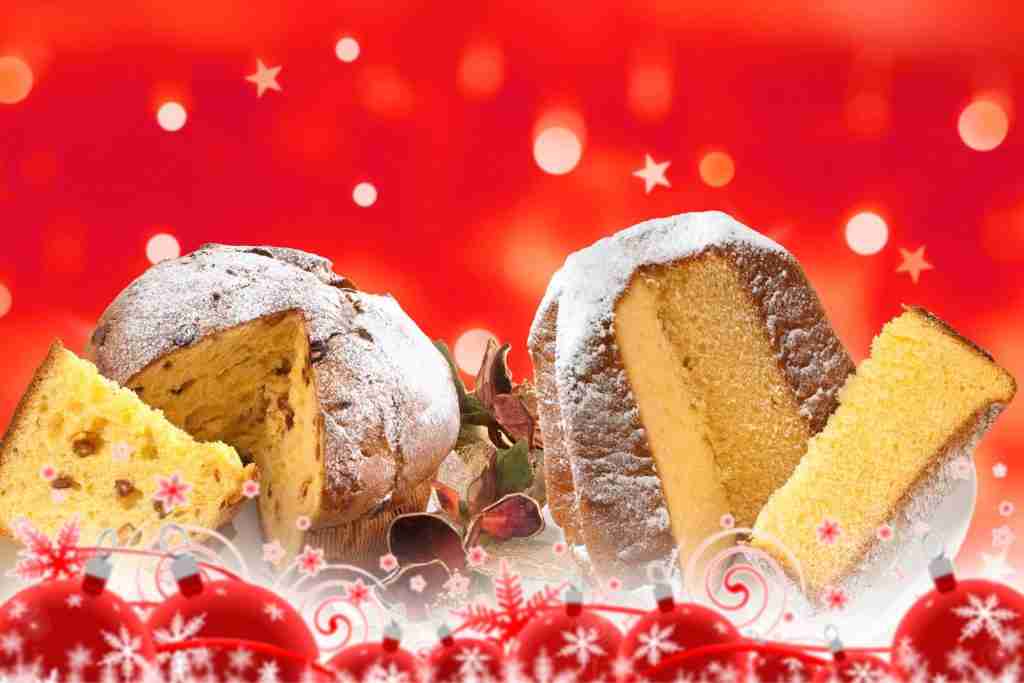
Christmas in Italy: traditions overflow with Roman charm
With its timeless cityscape dotted by towering pines, majestic churches and fairytale villas, Rome provides a stunning backdrop for Christmas festivities. As the epicenter of Catholic traditions, Christmas in the Eternal City abounds with poignant religious displays and sacred rituals alongside jubilant street fairs. Rome plunges into the Christmas spirit each December 8th for the feast of the Immaculate Conception. On this religious holiday, a torchlit procession treks up to the Piazza di Spagna to pay homage to the Madonna. Here locals place fresh wreaths of flowers or Mary figurines by Rome’s iconic Spanish Steps, which Catholic tradition says were scaled by angels announcing Mary’s conception to the world. Another endearing Roman tradition occurs two weeks before Christmas at Piazza Navona. Outdoor toy stalls overflow with playthings as excited children watch street performers and eagerly await La Befana’s arrival. She’s the kindhearted witch who brings candy and presents on her broomstick in Italy each January 6th. Even the famous Trevi Fountain gets a festive makeover for the holidays. Twinkling string lights adorn its baroque façade while a towering Christmas tree is set up alongside the world’s largest coin fountain. Visitors flock here to take in these gorgeous decorations and try their luck tossing a coin into the water, surrounded by legend. No Roman Christmas would be complete without a visit to St. Peter’s Square. Each festive season the iconic elliptical colonnade displays an towering fir tree topped with an illuminated neon star. At the stroke of noon on Christmas Eve, the Pope appears at his window overlooking the crowded square for the annual Urbi et Orbi blessing. Translation to ‘to the city and to the world’, his message and blessing are broadcast globally in multitudes of languages. On Christmas morning, he also gives mass inside St. Peter’s Basilica. Joining these celebrations whether in-person or on television has become central to Christmas in Rome. While the religious aspect plays a leading role in Roman holiday traditions, secular celebrations burst with excitement too. Christmas markets called Il Mercatino flood the city in December, bringing festive music, artisanal wares and mouthwatering treats to town squares and famous landmarks. The aroma of roasting chestnuts, cinnamon pastries and hot wine wafts through the chilly air as Santas, elves and carolers roam the colorful stalls. Christmas Eve then ushers in The Feast of the Seven Fishes. Most Roman-Italian families gather to enjoy seafood galore at their extravagant dinner tables, flowing with wine to toast ‘Buon Natale!’ afterward. Common dishes are salt cod, sea bass, crab cakes, octopus salad, linguine with clams and marinated eels. Yule logs or panettone cake are then served before opening gifts. With early Christians in Rome celebrating Jesus’ birth quietly, the elaborate Christmas Eve feast only emerged in later centuries. Gift exchanges in Rome traditionally happen on Epiphany, January 6th. According to legend this is when an elderly La Befana doles out presents on her magic broomstick while kids are sleeping off sweets. Modern Roman parents often have gifts appear under the tree overnight thanks to the witch’s surreptitious visit. So, whether admiring dazzling lights draped across classical architecture, sampling Christmas delicacies from street vendors or bonding with loved ones amid festive fanfare, Rome offers a magical winter atmosphere like nowhere else. Over two millennia since its founding, the Eternal City continues blending sacred rituals with new traditions into the merriest, brightest holiday season.
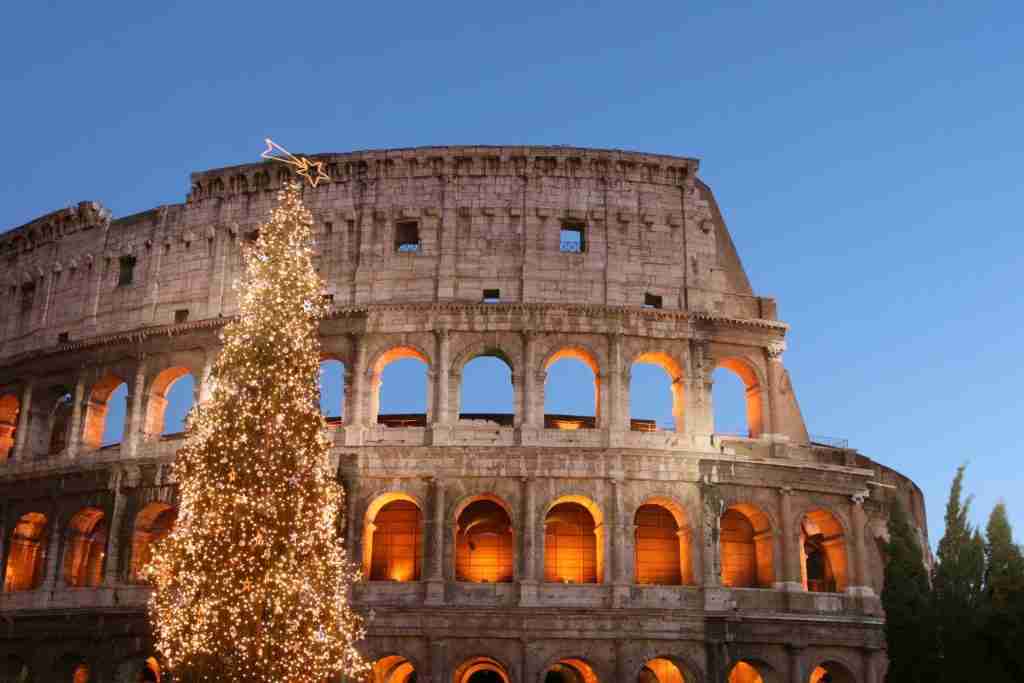
Christmas in Italy: traditions run deep in Sicily
The Italian island of Sicily boasts a rich cultural heritage spanning over three thousand years. Its strategic location in the Mediterranean made it home to Greek colonies, Arab invaders and Spanish conquerors. This unique history paved the way for Sicilian Christmas festivities today, weaving pagan winter solstice rituals with deep-rooted Catholic beliefs. The holiday season kicks off in Sicily on December 8th, a sacred feast celebrating the Immaculate Conception of Mary. Homes across the island display elaborate nativity scenes, wreaths, strings of lights and Christmas trees. In the weeks preceding Christmas, Sicilian towns come alive with markets selling handmade ornaments, nougat candy and seasonal street foods. Locals shop for gifts and decorate cakes while children eagerly wait to receive presents from old St. Nick. A universal Sicilian Christmas tradition is crafting intricate nativity scenes, or presepe. In the weeks before Christmas, families bring out cherished figurines carefully packed away since last year. Pieces are delicately arranged across tabletops, mantles and sideboards telling the story of Jesus’ birth. Some display miniature clay figurines just inches tall while others are life-sized dioramas with ‘live’ actors. The island’s largest crib attraction is the world’s third biggest presepe in Caltagirone. This elaborate creation sprawls across 1,000 square meters with over 200 hand-painted terracotta figures. On the northern coast in Acireale, nativity scenes are built right into the gardens of mansions and churches using cork, moss and pastel colored stones. No Sicilian Christmas table would be complete on Christmas Eve without traditional sweets like nougat torrone, almond biscotti and cassata cake. Cassata cake consists of sweet sheep’s milk ricotta blended with chocolate drops or candied fruit between layers of sponge cake coated in a shell of marzipan frosting. Families then gather for the Feast of the Seven Fishes, enjoying seafood pasta dishes, shrimp, calamari, lobster and octopus salads late into the night. Midnight mass holds great importance in Sicily as families unite to welcome the savior’s birth. At mass children even bring handmade figurines of baby Jesus to be placed in the cradle until Epiphany arrives. After returning home from mass early Christmas morning, gifts appear under the tree thanks to Babbo Natale (Father Christmas) much like Santa Claus. January 6th then marks the final celebration of the Sicilian Christmas calendar with Epiphany. On this day another unique ritual happens involving kids’ gifts being delivered once more by a kindly old witch named La Befana. Legend says La Befana ventures out on her magic broomstick each year searching for baby Jesus. Sicilian children prepare by leaving out plates of regional cookies like crisp tarallini rings or diamond-shaped mostaccioli biscuits along with glasses of wine or milk to offer her. While Christmas festivities in Sicily have evolved over thousands of years into a tapestry of cultural influences, time-honored traditions prevail across the island. From hand-crafted nativity scenes to feasts showcasing Sicilian seafood, scrumptious sweets and reverent masses, Christmas here immerses locals and visitors alike in abundant holiday spirit.
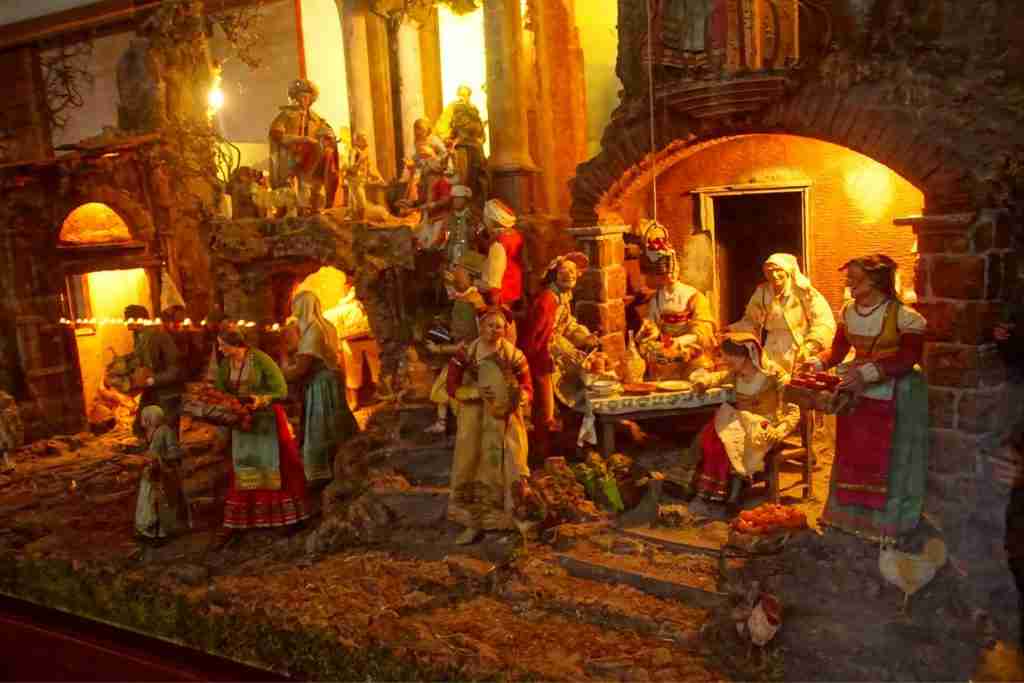
Christmas in Italy: traditions shine bright in Naples
The passion and chaos that permeates Neapolitan culture magnifies tenfold when the Christmas season descends on the city. Naples boasts a trove of unique Christmas customs that ooze Southern Italian charm, from folk legends to decadent food rituals. The start of Naples’ festive season centers around San Gregorio Armeno street, a pedestrian cobblestone lane crammed with little shops sculpting intricate nativity figurines. These artisan botteghe workshops stay open late crafting delicate shepherd, angel and animal characters filling locals’ annual nativity displays. For centuries San Gregorio Armeno has kept the presepe tradition alive both for Neapolitan families and as exports sold internationally. Another staple is Naples’ Christmas markets where Salvatore, a kindly wizard, is said to appear with gifts. The vibrant street stalls overflow with Neapolitan sweet treats like rum-soaked babà cake, cinnamon struffoli and creamy ricotta pastries. Children circle around Salvatore while parents shop for figurines to decorate their presepe. As Naples gears up for the holidays, bands march down Via San Gregorio Armeno playing lively music to welcome the Christmas crowds. Once home, Neapolitans unleash generations of carefully swaddled nativity figurines from storage to set up their presepe. Miniature clay characters fill mantles and countertops recreating Jesus’ birth and Naples itself with quaint houses, vineyards and lavish scenes from daily life. Some even include a fictional Mount Vesuvius eruption in the background! The centerpiece of every household is the bare presepe cradle awaiting the newborn Christ figurine. This lies empty until after midnight mass on Christmas Eve when a wooden bambiniello baby Jesus gets reverently placed inside. Naples and many Italian regions uphold this expectant custom throughout the season. After mass, Neapolitans commence perhaps the most indulgent tradition – the Feast of the Seven Fishes. Christmas Eve dinner serves up no less than seven seafood courses showcasing red shrimp, baby eels, salt cod, mussels and more. Dishes also feature classics like baccala Fritti (fried salted cod), vermicelli pasta with clams and mozzarella di bufala. Sweet struffoli dough fritters then bring the extravagant celebration to a close before Babbo Natale secretly delivers gifts overnight. Come December 27th, the festivities start back up again for the Feast Day of Saint Agrippina. She’s the patron saint and protector of Naples believed to safeguard the city from volcanic eruptions. Several churches hold special masses on December 27th to honor her and kickstart another week of Christmas celebrations before Epiphany arrives. Naples keeps the good cheer flowing on New Year’s too with its Riserva Cotillian tradition. This bizarre practice has hundreds lining up to touch the private parts of giant nativity scene figures resembling fertility idols. While scolded by the Church today, this pagan ritual linking to pre-Christian times still continues discreetly. From miraculous curses and eccentric folk customs to unrestrained feasting, Naples adds its distinct charm to Christmas magic. The month-long celebrations honor sacred Neapolitan and greater Italian traditions while showcasing the city’s passion for protecting age-old customs alive.
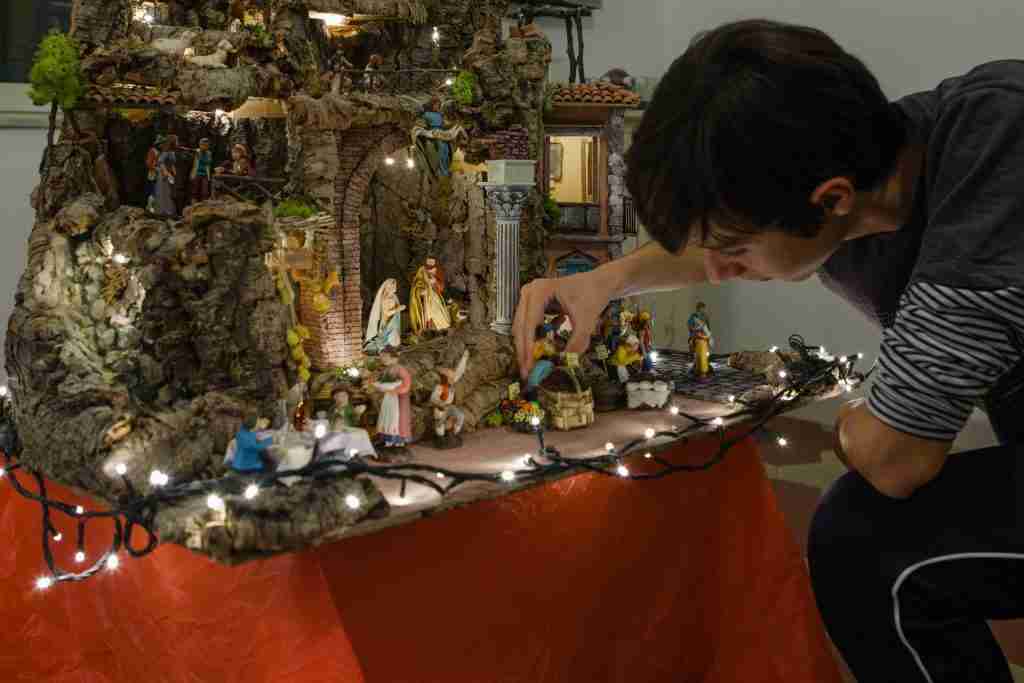
The Bottom Line
In this content we talked about Christmas in Italy: centuries of sacred and sweet traditions. From the Alps to Sicily, Christmas festivities across Italy prove as diverse and colorful as the country itself. While the season revolves around deep Catholic traditions, each region proudly maintains its own distinctive spins layered onto those ancient customs over centuries of cross-cultural exchanges. In the north where Christmas markets and Gothic cathedrals now stand, panettone and apparitions of kindly pastry makers keep children dreaming of sweets. Across central Italy’s timeless cities, families gather to pagan-inspired seafood feasts before midnight mass, as symbols of fertility and nativity scenes intertwine. Down south on the Mediterranean coasts, localized legends, multi-course fish dinners, and exploding Mount Vesuvius’ erupt amidst presepi tableaus under the watch of protective saints. The historical strata runs deep, from winter solstice celebrations predating Caesar through to globalized inflations of Coca Cola commercialism seen today. Yet anchoring Italian Christmas tradition remains the nativity scene first sculpted into reality by St. Francis of Assisi himself. For through the ceremonial unswaddling of the bambiniello baby Jesus before the masses each Christmas Eve to La Befana secretly sweeping across the land come Epiphany, the nucleus persists in retelling an impassioned story where heavenly and earthly realms collided one quiet night in Bethlehem. As families raise a toast and slice panettone while children play beneath twinkling lights, these time-honored rituals bind the bel paese together during the most wonderful time of year. The Italian Christmas remains steeped in tradition while still tasting as sweet as candied torrone. Keep to follow us to discover other Italian traditions, curiosities and everything on our LCN app.

